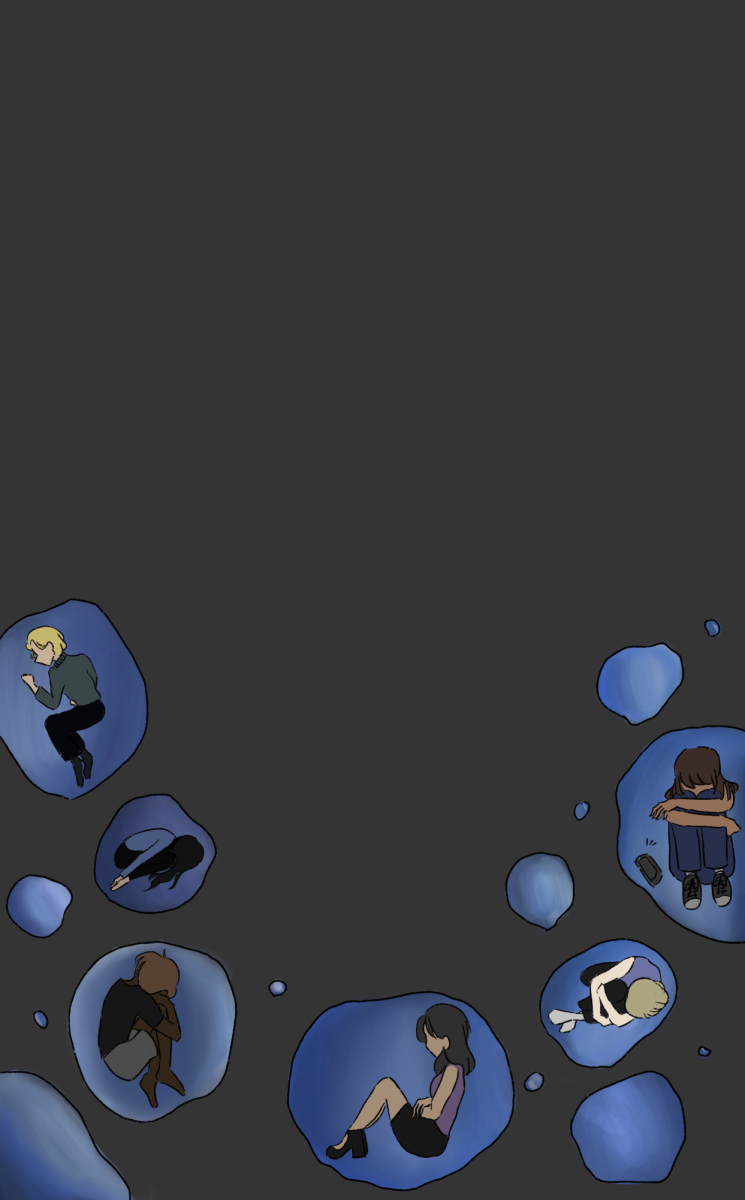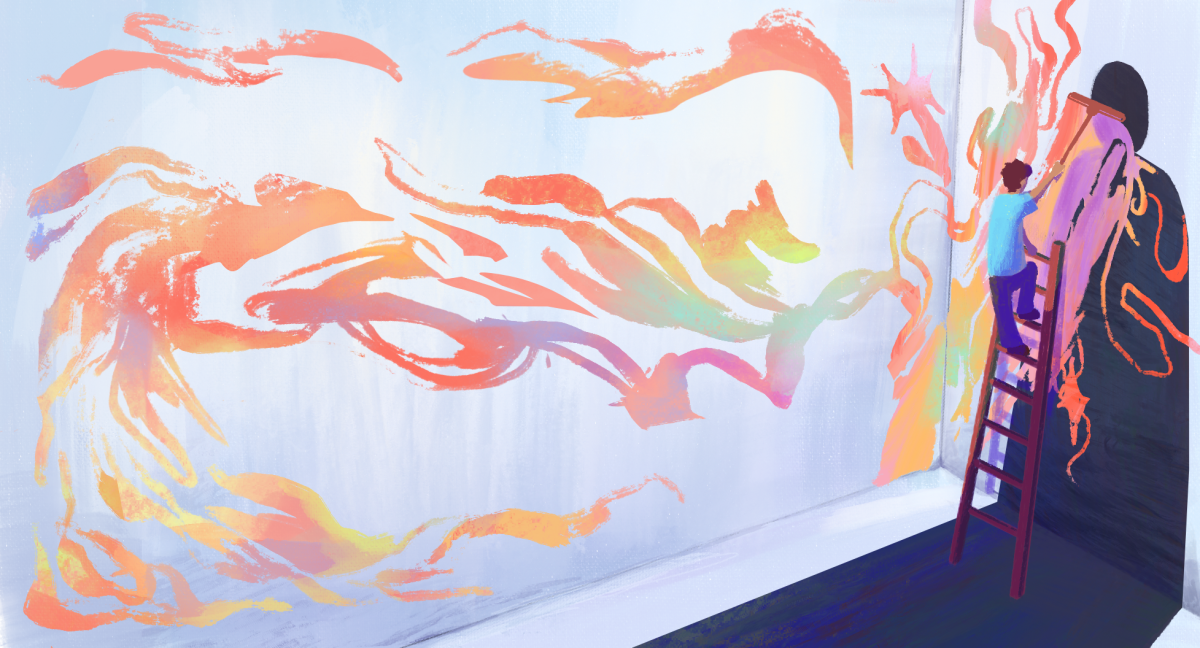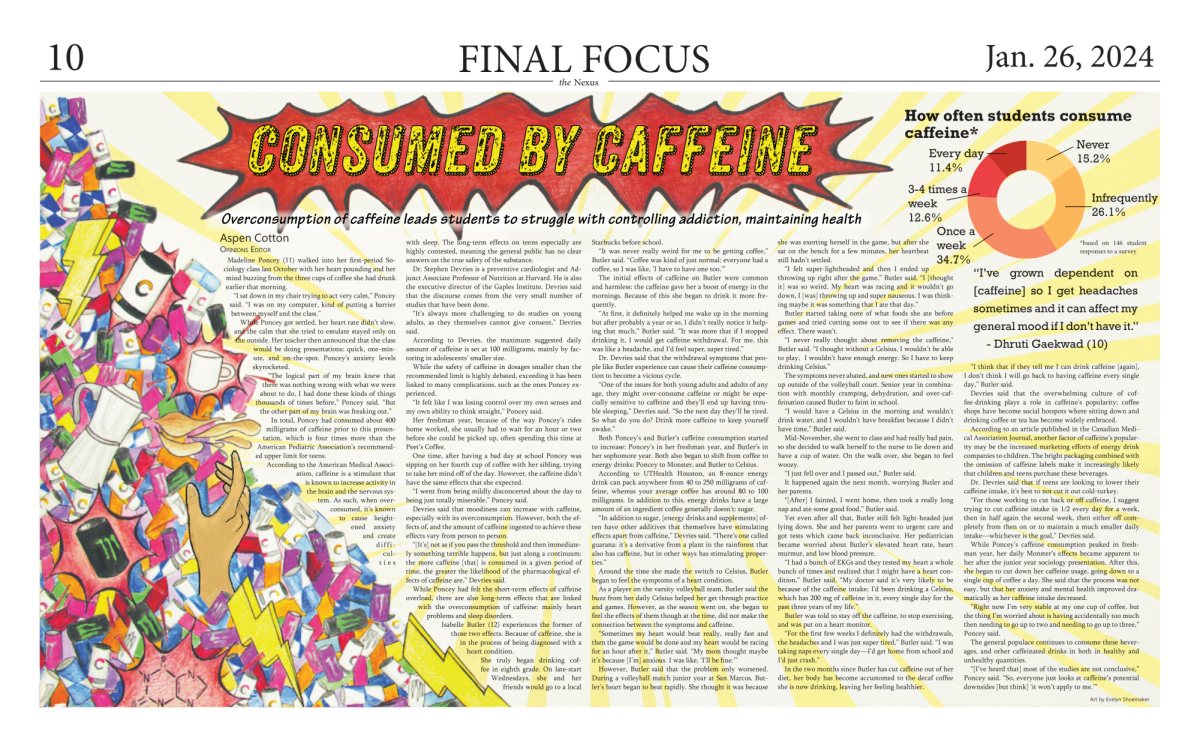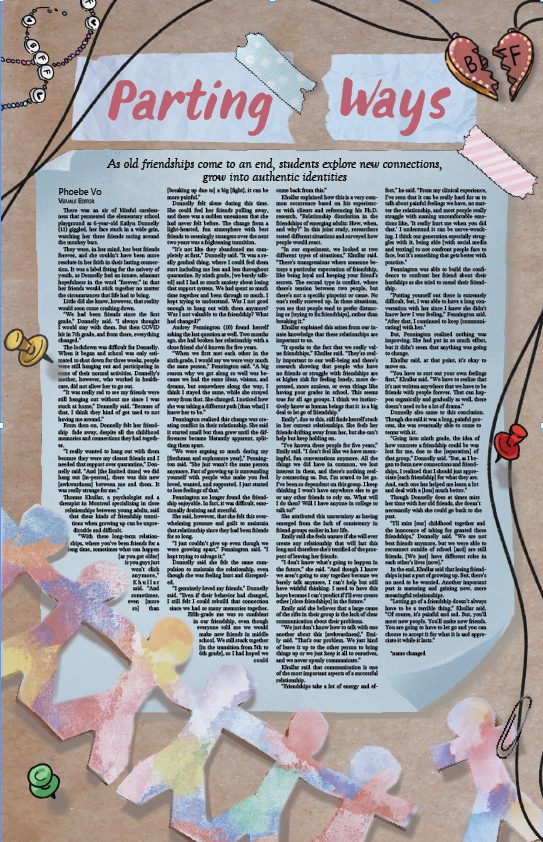Popping the bubble: Understanding the roots of complacency helps us break out of our comfort zone and embrace purposeful risk-taking
Adam Chang (11) walked into his third-period class and stopped in his tracks. He stared at the middle seat on the side table, the all-too familiar place he had sat every day for the first two weeks of school. His seat was taken. All sorts of conflicting thoughts flooded into his brain.
I should’ve come to class two minutes earlier. Where am I supposed to sit now?
Just minutes before, David Zeng (12) had walked into the very same classroom. He had just transferred into the class and simply sat down in the first open seat that he saw: one that happened to be the same middle seat on the side table.
Even without set seating arrangements, Chang felt that intangible sense of entitlement to the seat, his seat.
Chang is not alone; a study by Marco Costa of the University of Bologna in Italy found that students show a strong attachment to specific areas of classrooms. On average, each student would only sit in roughly two percent of the classroom. According to Costa, this is an everyday, overlooked phenomenon which stems from an inherent need for consistency.
The seat itself is more than a familiar setting for most of us. From the friends who sit right next to us to the level of class participation we feel we are entitled to, our “unassigned” assigned seating creates a type of environment that goes beyond just the physical space.
COMFORT ZONE
The comfort zone is wherever you find control. Control can take the form of your room, your seat in the classroom, or even your everyday routine. Whatever the control may be, we’re always drawn back to the things that feel like home.
Brené Brown, a professor at the University of Houston Graduate College of Social Work, defines the comfort zone as an area “where our uncertainty, scarcity and vulnerability are minimized.”
A natural fear of being out of control or feelings of general discomfort shields us from potential dangers. Sheltering has kept us alive, whereas risk-taking and spontaneity put us at a higher risk of death. That very trait that proved beneficial to our species’ survival in the past has created this complacency in everyday life, preventing us from achieving our full potential.
This unpredictability in change has driven us to find comfort in routine and consistency.
Every day, we talk to the same people, we sit in the same place at lunch, and we send our snapchat streaks without giving it a second thought. It becomes second nature to us; it’s easy and comfortable.
There always that seemingly invisible barricade that creates distance between living the life they imagine for themselves, and the life they’re currently living.
For Eric Nakamura (12), this disparity was ultimately the driving force for change.
In middle school, Nakamura was often too scared or uncomfortable to speak in class, making his transition into high school a greater challenge than it already was.
As a freshman, Nakamura found himself in the ASB room, surrounded by every type of unfamiliarity. He was in an unfamiliar school, an unfamiliar class with unfamiliar people. Nakamura was about to enter the risk zone.
Professor Daniel S. Newman from National Louis University in Illinois, defines the risk zone as the most fertile place for learning, a place where people don’t know much, or anything at all. But, it is a place where people are willing to learn, take risks, and are open to new ideas in order to improve themselves.
Nakamura originally joined ASB hoping to find an environment where he would be more actively involved in the community. While there, he marveled at the courage people displayed, saying anything that came to their minds with no hesitation.
When we watch others do the seemingly fearless things we could never imagine doing ourselves, it forces us to reflect upon the reasons we hold ourselves back.
“Any time we open ourselves up to vulnerability, it’s a very uncomfortable mirror,” Brown said.
Over time, Nakamura saw his social setbacks as a manageable choice. He envied his peers’ ability to simply walk into homerooms and talk in front of entire classrooms or emcee pep rallies in front of the whole student body. Ultimately, Nakamura saw it less about self-pity and more about seeing the active choice they had made to leave their comfort zone. It became even more clear that, in a sense, he had made the choice to stay in it.
“Simply interacting with so many confident, outspoken people, it gave me the courage to do the same,” Nakamura said. “I took that confidence with me in the classroom, and outside of the classroom–into all aspects of my life.”
For Nakamura, finding the strength to come out of his shell was a matter of actively breaking down the brick wall he had built around himself. The more time spent hiding behind that comfort zone, the thicker the wall became. So, chipping it away was a process that took time, effort, and dedication.
CALCULATED SPONTANEITY
Daniel Kang (12) says he has always been more of an introvert than an extrovert; something most people wouldn’t get from any typical interaction with him. Kang is a go-getter, talkative and sociable, but he wasn’t always like that. Growing up, Kang constantly moved and always found himself filling the role as the “new kid.”
Kang made the daily effort to insert himself into conversations and take any small opportunity to put himself in the social spotlight, slowly getting more used to the initial discomfort he felt from approaching people.
It’s those few seconds of unplanned courage that put us in a state of slight distress. Harnessing that discomfort into growth all starts with embracing that lack of control.
“We need a place of productive discomfort,” Daniel Pink, a behavioral science author, said. “If you’re too comfortable, you’re not productive. And if you’re too uncomfortable, you’re not productive.”
The completely spur-of-the-moment decisions cause anxiety levels that hinder our abilities and throw off our progress. A highly uncomfortable situation, in turn, can give us more reason to retreat back into our safe havens, making our comfort zones even more impenetrable.
On the other hand, there’s a level of order to challenging your limits that can’t always be there.
“There’s a fine line between taking little steps and just being super orderly to me,” Kang said. “At that point if you’re doing things so systematically, it’s not really pushing you out of your comfort zone.”
This concept goes back to a classic psychology study from 1908 on rodents by Harvard researchers Yerkes and Dodson that tested how stress levels affected efficiency. The rats that sustained no shocks felt no obligation to finish the task, while the ones that received shocks with too high of an intensity broke down and were unable to function productively.
So, it was the group of rats that felt just the right amount of pressure to succeed, or that “optimal anxiety,” that eventually performed at peak level.
Finding that “optimal anxiety,” a place where our stress levels are just slightly higher than usual, is all about finding that Goldilocks “just right” balance.
For Kang, it’s that small, in-the-moment type of spontaneity that can truly be harnessed into something progressive.
“I’m not always in the best condition,” Kang said. “Sometimes, all I want to do is stay home and read. But, taking that little spark of energy and transforming that into the next logical step is extremely important for me.”
NECESSITY
It’s common for motivational speakers or any generic poster on a classroom wall to say we have to try something that scares us. While it’s difficult enough to purposefully put yourself in an uncomfortable situation, being forced into one turns into a sink-or-swim situation.
“It isn’t exactly easy being quiet when you’re the new kid and you’re trying to get to know everybody,” Kang said. “So over time, it’s turned into this thing where a willingness to put myself out there is more of a necessary skill.”
At his new schools, Kang was thrown in the deep end.
He either had to assimilate into his new home or face the social repercussions of lagging behind.
“When you’re in a new environment, how well you can assimilate in part is how well you can converse with others,” Kang said.
Brown said that comfort zones, as safe and secure as they seem, are still temporary due to not only environmental changes, but also personal changes as well. By making progress in a controlled environment, adaptation in an uncontrolled one becomes second nature.
“I think the biggest mistake people make is not acknowledging fear and uncertainty,” Brown said.
Acknowledging the frailty of our situations paints a stark yet accurate image of our perceived safe havens. So, purposefully living outside our comfort zones keeps us prepared for when life inevitably forces us out of it.
Like the name suggests, it’s a comfort zone; it’s going to be uncomfortable and awkward when we first step out of it. Recognizing our comfort zones (and the reasons why we’re drawn to that classroom seat) is the first step to finally stepping away from it.
Life is the culmination of all our experiences, not just familiar ones.
The world we live in is fast-paced, competitive, and full of opportunity; embracing a lifestyle that continuously pushes the boundaries keeps us constantly progressing.








